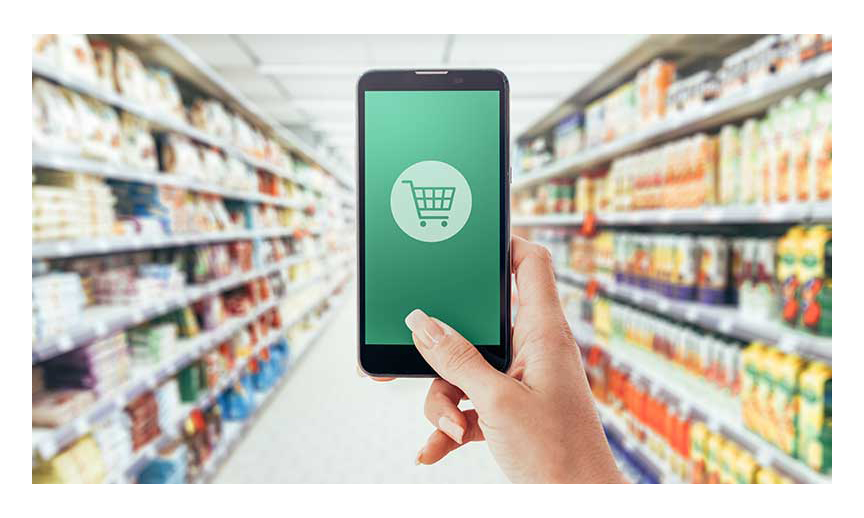A new Oracle Grocery Retail survey shows that 53 percent of respondents in the U.S. have shopped online for groceries during the pandemic, with 37 percent stocking up more frequently online than in-store. And few people plan to reverse course – 93 percent of those surveyed said they plan to shop online for groceries post-pandemic, with 74 percent noting they will order groceries the same amount or more as they are doing currently.
This trend will extend into the busy Thanksgiving holiday, where 21 percent of consumers plan to order groceries online, and 59 percent plan to head into the store to buy the fixings for their feast.
“Online grocery ordering is not new, but the pandemic was the tipping point to take it mainstream,” said Mike Webster, SVP and general manager of Oracle Retail. “Grocery retailers were left grappling with both supply chain issues and consumer behavior that was anything but normal – causing chaos and shortages. While stores navigated relatively quickly, the data shows that consumers have no plans to return to their old ways. Grocers need to examine what that means for their operations, store layouts and everything in-between as we all move forward.”
The Untold Insights survey, conducted on behalf of Oracle Retail, polled 521 consumers in the U.S. in September about their COVID-19 shopping habits and another 500 in November about their plans for the holiday season.
Door-side delivery
When it comes to online grocery ordering, the vast majority of consumers opt for home delivery:
• 72 percent – have groceries delivered to their home;
• 13 percent – pick them up inside the store; and
• 15 percent – collect their groceries curbside.
“Grocery retailers have done a good job using physical stores as makeshift warehouses to fulfill orders and get them out quickly to customers,” Webster said. “However, they need to carefully balance the disruption of delivery services and store-workers fulfilling online orders with customers trying to shop in-store. This includes both crowding in the aisles as well as the risk of out-of-stock inventory. It will be especially crucial in the high-volume holiday timeframe with customers adding pressure both online and in-store.”
Loyalties tested
With grocery shortages during the pandemic, 86 percent of shoppers explored store owned brands and private label alternatives, with some having no plans of returning to their old favorites;
• 32 percent – intend to stick with the store brands;
• 34 percent – will shop a mix of new finds and preferred brands; and
• 20 percent – will go back to preferred brands.
“The surge in private label purchases has become the unexpected silver lining of COVID-19 for grocers,” said Webster. “Consumers uninterested in trying something new were forced to branch out due to shortages and now plan to stick with their new finds. This allows grocers an opportunity to increase brand affinity with customers and, in turn, their margins.”
Grandparents try online ordering
A significant percentage of all age groups surveyed have ordered groceries online during the pandemic, with Generation X leading the way:
• 72 percent – Gen X (40-54);
• 61 percent – Gen Z (18-24);
• 60 percent – Millennials (25-39); and
• 30 percent – Boomers (55+).
Although Boomers represented the lowest total overall, this age group saw a 173 percent increase in those who had ordered groceries during COVID-19 versus before the pandemic. Moreover, 83 percent of this demographic plan to continue ordering groceries online. Interestingly, those with kids were also more than twice as likely to order groceries online (82 percent) versus those without children (36 percent).
Stockpiling has eased; toilet paper still tops
Despite COVID-19 winter warnings, shoppers are worrying less about shortages of essential items. Just 28 percent of those polled are planning to stockpile household essentials and pantry staples, including:
• 69 percent – Toilet paper;
• 69 percent – Cleaning products;
• 54 percent – Canned fruits and vegetables;
• 50 percent – Meat;
• 48 percent – Soup;
• 48 percent – Pasta; and
• 46 percent – Rice.
Interest in food subscription boxes grew
With more shoppers eating at home and looking for inspiration, meal subscriptions increased:
• 22 percent already had a food or meal subscription they continued;
• 10 percent already enjoyed one food or meal subscription service and added another; and
• 4 percent started a new food or meal subscription for the first time.
To learn more about how Oracle Retail is helping customers and retailers prepare for the holiday seasons, visit: oracle.com/retail and oracle.com/industries/retail/grocery.html.

